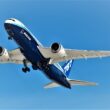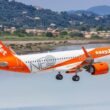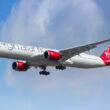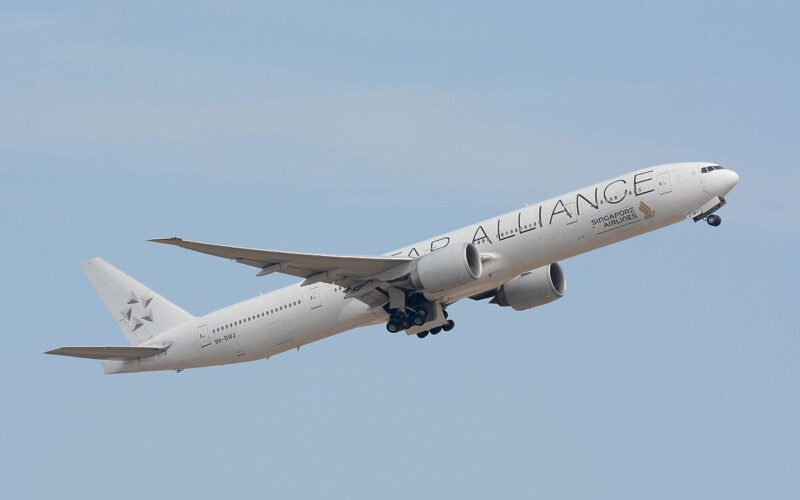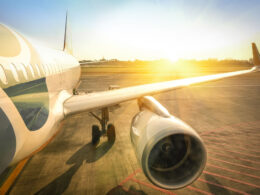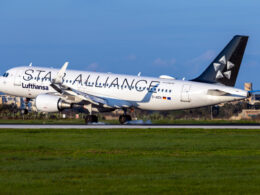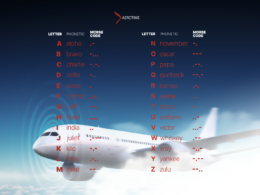Airline Alliance’s Benefits Explained
Just yesterday, the biggest airline alliance, namely Star Alliance celebrated their 22nd birthday. 5 airlines came together into an agreement to establish the alliance – United Airlines, Scandinavian Airlines (more commonly referred to as SAS), Thai Airways, Air Canada (ADH2) and Lufthansa (LHAB) (LHA) .
Airline alliances while not new, they were definitely rare at the time. The first ever alliance goes back to the 1930s, when one of the most famous now-bankrupt airlines in the world, Pan American formed an alliance with its subsidiary in Latin America, Pan American Grace Airways.
For many years that followed, airlines entered only into codesharing agreements between two partners. But as the 90s came around, when the Netherlands and the United States signed an open skies agreement between the two countries. The two parties signed the agreement in 1992.
But 5 years later, five major airlines formed Star Alliance. In 1997, the way we travel around the world changed forever.
Airline alliances sound nice and all, but question is – what are the benefits of alliances for airlines and passengers?
Cost saving
Starting out with the pros for alliances, the most obvious one is cost saving. What airlines in alliances essentially do, is that they share various facilities while ensuring the highest quality of service to their passengers.
So, using Star Alliance as an example, Lufthansa (LHAB) (LHA) and United fly under the same alliance. I want to book a ticket from Los Angeles to Frankfurt. But Lufthansa (LHAB) (LHA) does not have any ticket offices in Los Angeles (hypothetically), so what do I do? I go to United‘s ticket office.
 United Airlines Boeing 747 and a Lufthansa Airbus A380. Source
United Airlines Boeing 747 and a Lufthansa Airbus A380. Source
This saves Lufthansa (LHAB) (LHA) money, as they do not have to employ ticket agents in Los Angeles. They are under the same alliance so the booking agents will help me book tickets on a Lufthansa (LHAB) (LHA) flight.
So, as I had to book last minute, I had to pick a flight option with a stop-over. I depart from Los Angeles and have a stop-over in Chicago‘s O‘Hare. The flight from LAX to IAD is operated by United Airlines. Lufthansa (LHAB) (LHA) saves money here as well – they do not have to operate a route which can be potentially unprofitable for Lufthansa (LHAB) (LHA) , as the airline is not as popular amongst domestic passengers in the United States like United is.
However, on the previous day, on a flight from Frankfurt to Chicago, the Boeing 747 broke down with a minor issue. Unfortunately, Lufthansa (LHAB) (LHA) does not have any maintenance facilities in Chicago to repair the Queen Of The Skies (again, hypothetically).
Sharing is Caring
But luckily, United does have its own facilities! So, in order to save costs of transferring maintenance staff from one of their bases in the United States to Chicago, Lufthansa (LHAB) (LHA) uses United‘s maintenance staff.
Before my flight departs, United‘s mechanics fix Lufthansa (LHAB) (LHA) ‘s aircraft. The German airline saved time and money.
As Flight LH431 departs at 4 PM, I am not hungry, but I‘d like a cup of tea or some light snacks. As I am a Star Alliance Gold member, I can access a premium lounge to fill up before my flight. Lufthansa (LHAB) (LHA) does not have a lounge at Chicago. However, United does, so I enter their lounge and steal as many Croissants as I possibly can.
Yet again, Lufthansa (LHAB) (LHA) saves money, as they do not have to open their own lounge. They also keep a customer happy, as the Croissants are quite delicious (hypothetically once more, as I have never tasted the Croissants at United‘s Lounge in Chicago).
The boarding, taxiing, baggage loading on the Boeing 747 are all done by United‘s staff, allowing Lufthansa (LHAB) (LHA) not to deploy any employees to O‘Hare.
The whole process would work vice-versa as well if I were to travel from Berlin to Los Angeles, with a stop-over in Frankfurt. Lufthansa (LHAB) (LHA) ‘s staff would take care of me, even if I was flying on an aircraft registered to United.
So, essentially, for airlines, the number one benefit is that they save a lot of money. They do not have to deploy their staff all around the world, yet they can still maintain their aircraft and passengers.
But what is the benefit of an airline alliance for a passenger?
Flexibility
One word to sum up the benefits for a passenger – the word would be flexibility. If you were to book the same Los Angeles – Frankfurt flight in advance, I would have multiple options available to me. I can start my journey early in the morning or I could fly in the evening.
 Booking options for a flight from Los Angeles to Frankfurt on Lufthansa (LHAB) (LHA) ‘s website
Booking options for a flight from Los Angeles to Frankfurt on Lufthansa (LHAB) (LHA) ‘s website
If I were to travel from a smaller airport in the US to Frankfurt, I would only have 1 stopover, as United would transfer me to an airport served by Lufthansa (LHAB) (LHA) . This would allow me to save time as well, as multiple layovers can take up a lot of your day.
Airline alliances allow a traveler to enter lounges all over the world. So, if Lufthansa (LHAB) (LHA) doesn‘t have a lounge at Chicago, you can access United‘s lounge.
Passengers also can enjoy more routes available to them, as airlines allow to book tickets on the airline alliance‘s partners flights as well.
Travelers can use and earn miles on airline alliance partner flights. If I‘m a Lufthansa (LHAB) (LHA) frequent flyer, I can use my miles to book a United Airlines flight and vice versa. I also receive the miles flown on the flight.
Finally, due to the operational costs going down because of all the sharing, the ticket prices are usually cheaper.
Drawbacks
However, nobody is perfect. There are disadvantages that airline alliances bring to the table or rather an airport.
While operational costs do go down and ticket prices do so as well, on the other hand, they can also increase the price. Consider this – a route between two airline hubs that are in the same airline alliance will drive out the competition and the airlines will gain a monopoly. The same example of Chicago O‘Hare – Frankfurt route works perfectly, as only two passenger airlines schedule flights between those two airports – United and Lufthansa (LHAB) (LHA) .
Those two airlines essentially have a monopoly, as they are in the alliance. No other competitors offer direct flights between the two destinations and passengers have no other option but to book on Star Alliance‘s member flights. This means that the airlines can get greedy and spike up the prices of the tickets. Greed and an unregulated company go hand in hand in a capitalist society.
Subsequently, some airlines might be forced to abandon certain routes due to the competition from an Airline alliance. As the alliance members can significantly reduce operational costs, the competing airline has no choice but to abandon the route, as their operational costs are significantly higher.
Interestingly enough, airlines can also compete with each other in an alliance. For example, Qatar Airways has expressed multiple times that they plan to leave oneworld, as American Airlines (A1G) (AAL) is asking the United States government to investigate Qatar‘s unfair business practices regarding the Qatari airline. In addition, Qatar has accused Qantas of blocking its expansion into Australia, as Qatar Airways struggles to get any landing rights.
Summing up an Airline Alliance
An airline alliance is a cooperative agreement between multiple airlines, as the carriers share flights, operational costs and frequent flyer programs. There multiple alliances around the world, with the biggest ones being Star Alliance, oneworld and SkyTeam. Low-cost-carriers also have founded alliances around the world, such as the U-Fly Alliance and Value alliance. Both low-cost carrier alliances are based in Asia. Airline Alliances benefit both the airlines and the customers – codesharing, reduced operational costs means passengers can enjoy many more flights between destinations for a lower price.

